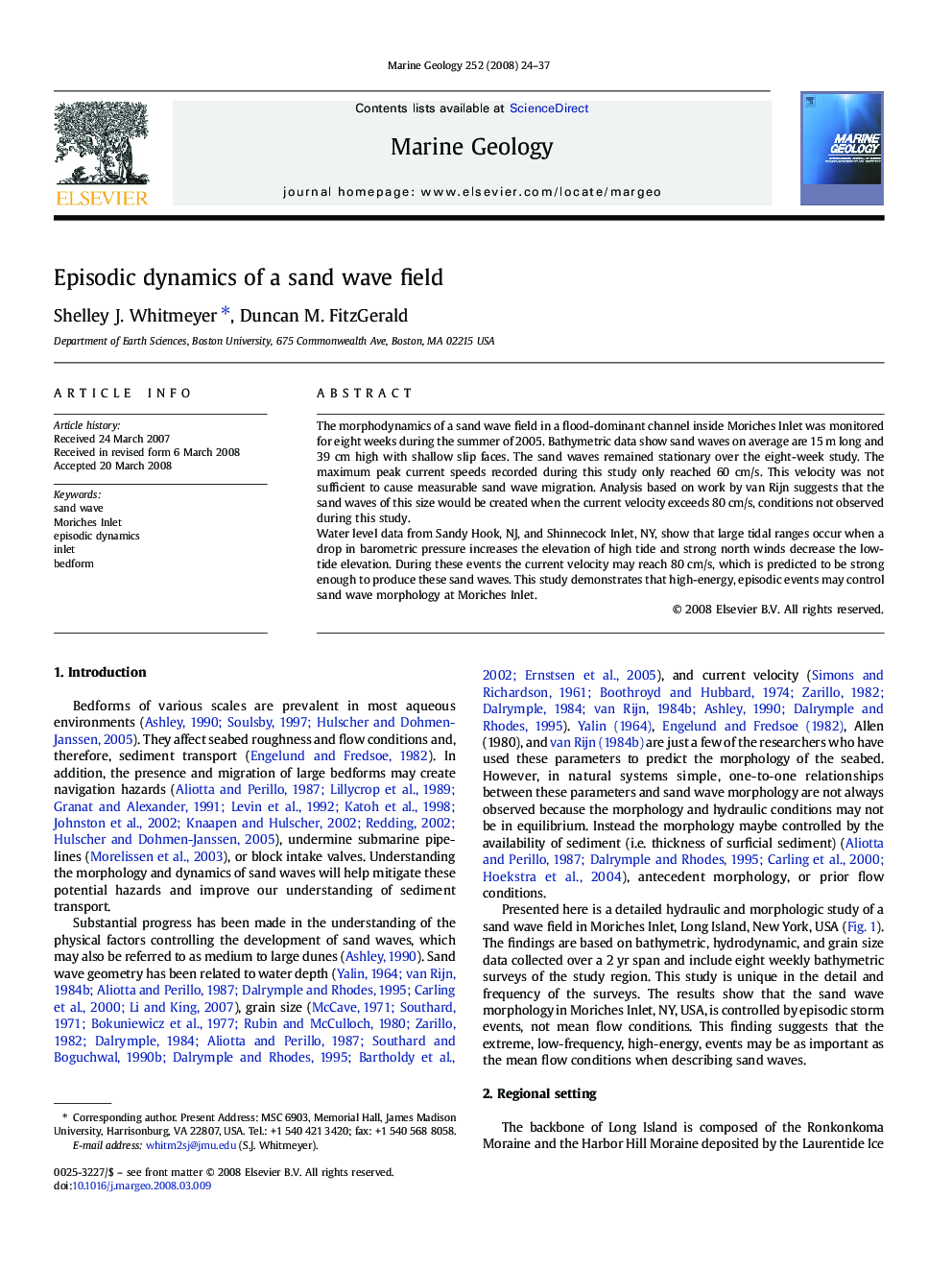| Article ID | Journal | Published Year | Pages | File Type |
|---|---|---|---|---|
| 4719314 | Marine Geology | 2008 | 14 Pages |
The morphodynamics of a sand wave field in a flood-dominant channel inside Moriches Inlet was monitored for eight weeks during the summer of 2005. Bathymetric data show sand waves on average are 15 m long and 39 cm high with shallow slip faces. The sand waves remained stationary over the eight-week study. The maximum peak current speeds recorded during this study only reached 60 cm/s. This velocity was not sufficient to cause measurable sand wave migration. Analysis based on work by van Rijn suggests that the sand waves of this size would be created when the current velocity exceeds 80 cm/s, conditions not observed during this study.Water level data from Sandy Hook, NJ, and Shinnecock Inlet, NY, show that large tidal ranges occur when a drop in barometric pressure increases the elevation of high tide and strong north winds decrease the low-tide elevation. During these events the current velocity may reach 80 cm/s, which is predicted to be strong enough to produce these sand waves. This study demonstrates that high-energy, episodic events may control sand wave morphology at Moriches Inlet.
